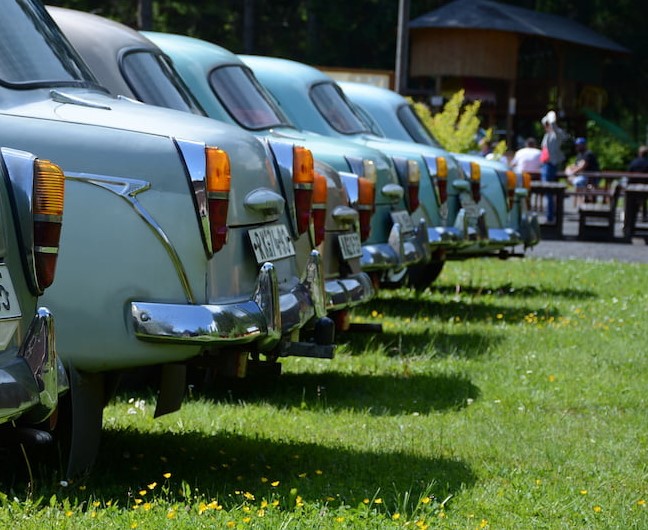Browse through this list of terminology about collector cars to see some terms commonly found here on Classic Cars Online US as well as other places on the internet.

Collector Car Terminology
Antique Car
While many classic car clubs offer a unique description of antique cars, one fairly universal antique car classification is that all cars produced before World War I are considered to be antiques.
The Antique Automobile Club of America uses the distinction of any car over 25 years old as an antique.
Additionally, antique car registration regulations – for the purpose of licensing an antique vehicle – vary by locality.
Barn Find
Barn finds are classic cars that are rediscovered after sitting in storage for a long time – often in barns as the name implies.
The term barn find often refers to a vehicle that’s highly collectible – even if it’s in poor condition – due to its rarity and value as a collector car.
The term barn find can also be applied to vintage airplanes and collectible motorcycles that have been stored.
Brass Era
Brass Era cars were made in the late 1800s through about 1915 and are named for the brass accoutrements – like radiators and light housings.
Brass Era cars also fit under the heading of antique cars as well as collectible cars and classic cars.
The Brass Era also overlaps the Veteran Era of car manufacturing and the Edwardian Era.
Classic Car
Classic Cars are broadly defined as cars that have been around more than 25 years .
Classic cars can also be referred to as antique cars, collector cars, as well as vintage cars and pretty much any term used to describe an antique vehicle – or one that’s at least 25 years old.
Classics have also been referred to as ‘fine automobiles’ and ‘distinctive automobiles’ by some automotive collectors.
Edwardian Era
Edwardian Era cars were made between January 1, 1905 and December 31, 1918.
Edwardian Era vehicles can also be classified as antique vehicles, pre-war vehicles, vintage vehicles, classics, and collectibles.
Some Brass Era Vehicles also are included in the category of Edwardian Era vehicles.
Horseless Carriage
The first cars to roll down the roads were called horseless carriages because at that time, horse-drawn carriages were the norm.
The term is an example of the name for a new technology being described by what’s missing.
The first motorized vehicles didn’t have horses and looked like carriages… so they naturally picked up the moniker ‘horseless carriages’.
Modern Classic Cars
Modern classic cars are collectible classics and sports cars that are newer than 25 years.
Because they’re newer classics, they aren’t accepted into some car collector clubs and some may also be too new to get antique vehicle licenses.
The modern classic car classification can also impact the option to get specific types of collector car insurance for people who live in the UK.
Muscle Car
The dictionary definition of muscle cars is, “a group of American-made two-door sports coupes with powerful engines designed for high-performance driving.”
The term muscle car was first used around 1966 to describe the 1966 Pontiac GTO.
Some collectors refer to the 1949 Oldsmobile 88 and the 98 as the original muscle cars, while others apply the term muscle cars to the high-powered cars from the 1960’s and 1970’s.
Number Matching
Number matching cars are classics that have all the original major components intact.
This can also be called code matching, due to the inclusion of the VIN (Vehicle Identification Number) code being stamped into the metal when the vehicle was manufactured.
In the collector car industry, number matching refers to the authenticity of a vehicle and lets collectors know a bit about a collectible car’s investment value.
Veteran Era
Veteran Era cars were the earliest models to hit the roadways.
The Veteran Era of automobiles ran from the time the first inventor built a horseless carriage and ran until 1896.
Three examples of Veteran Era cars are George B. Selden’s 1879 Road Engine and Karl Benz’s 1885 Benz Motorwagen, and the 1893 Duryea Motor Wagon.
Vintage Era
Vintage Era cars were the models produced post-WWI, from 1920 until 1930.
During the height of the Vintage Era, over 500 companies were building automobiles.
Only 60 companies survived the Great Depression and were still in business at the end of the Vintage Era.
Collector Car Terminology to Add?
If you’ve browsed through this list of terminology about classic cars and haven’t found what you’re hunting, leave a comment here or in our Classic Cars Online US Facebook group and we’ll do our best to follow up with more info.
Thank you for visiting Classic Cars Online US!
